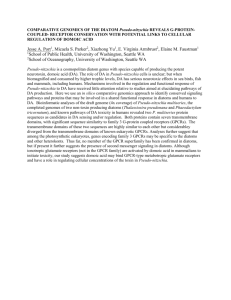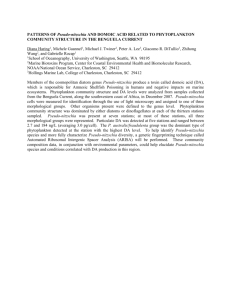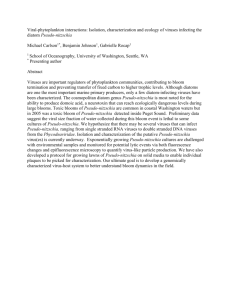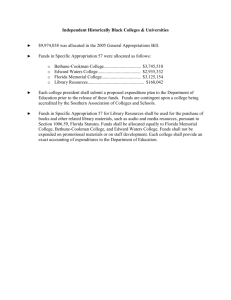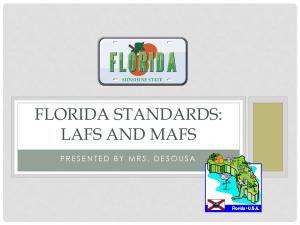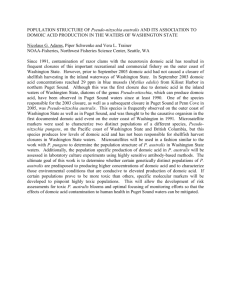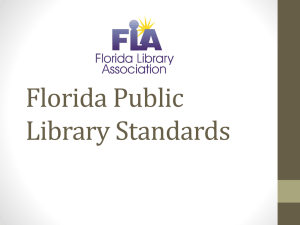Pseudo-nitzschia species in west Florida coastal waters
advertisement
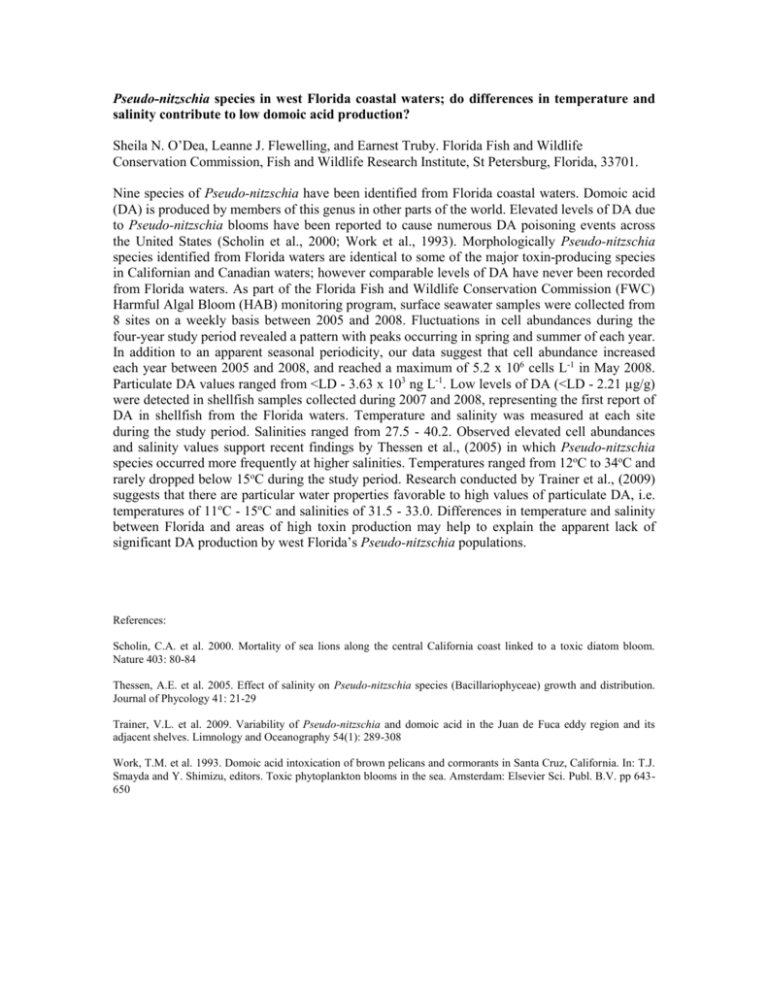
Pseudo-nitzschia species in west Florida coastal waters; do differences in temperature and salinity contribute to low domoic acid production? Sheila N. O’Dea, Leanne J. Flewelling, and Earnest Truby. Florida Fish and Wildlife Conservation Commission, Fish and Wildlife Research Institute, St Petersburg, Florida, 33701. Nine species of Pseudo-nitzschia have been identified from Florida coastal waters. Domoic acid (DA) is produced by members of this genus in other parts of the world. Elevated levels of DA due to Pseudo-nitzschia blooms have been reported to cause numerous DA poisoning events across the United States (Scholin et al., 2000; Work et al., 1993). Morphologically Pseudo-nitzschia species identified from Florida waters are identical to some of the major toxin-producing species in Californian and Canadian waters; however comparable levels of DA have never been recorded from Florida waters. As part of the Florida Fish and Wildlife Conservation Commission (FWC) Harmful Algal Bloom (HAB) monitoring program, surface seawater samples were collected from 8 sites on a weekly basis between 2005 and 2008. Fluctuations in cell abundances during the four-year study period revealed a pattern with peaks occurring in spring and summer of each year. In addition to an apparent seasonal periodicity, our data suggest that cell abundance increased each year between 2005 and 2008, and reached a maximum of 5.2 x 106 cells L-1 in May 2008. Particulate DA values ranged from <LD - 3.63 x 103 ng L-1. Low levels of DA (<LD - 2.21 µg/g) were detected in shellfish samples collected during 2007 and 2008, representing the first report of DA in shellfish from the Florida waters. Temperature and salinity was measured at each site during the study period. Salinities ranged from 27.5 - 40.2. Observed elevated cell abundances and salinity values support recent findings by Thessen et al., (2005) in which Pseudo-nitzschia species occurred more frequently at higher salinities. Temperatures ranged from 12oC to 34oC and rarely dropped below 15oC during the study period. Research conducted by Trainer et al., (2009) suggests that there are particular water properties favorable to high values of particulate DA, i.e. temperatures of 11oC - 15oC and salinities of 31.5 - 33.0. Differences in temperature and salinity between Florida and areas of high toxin production may help to explain the apparent lack of significant DA production by west Florida’s Pseudo-nitzschia populations. References: Scholin, C.A. et al. 2000. Mortality of sea lions along the central California coast linked to a toxic diatom bloom. Nature 403: 80-84 Thessen, A.E. et al. 2005. Effect of salinity on Pseudo-nitzschia species (Bacillariophyceae) growth and distribution. Journal of Phycology 41: 21-29 Trainer, V.L. et al. 2009. Variability of Pseudo-nitzschia and domoic acid in the Juan de Fuca eddy region and its adjacent shelves. Limnology and Oceanography 54(1): 289-308 Work, T.M. et al. 1993. Domoic acid intoxication of brown pelicans and cormorants in Santa Cruz, California. In: T.J. Smayda and Y. Shimizu, editors. Toxic phytoplankton blooms in the sea. Amsterdam: Elsevier Sci. Publ. B.V. pp 643650
